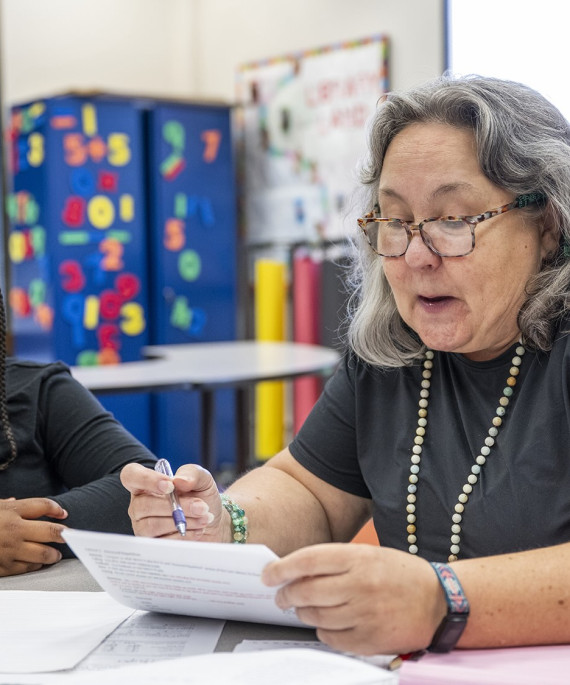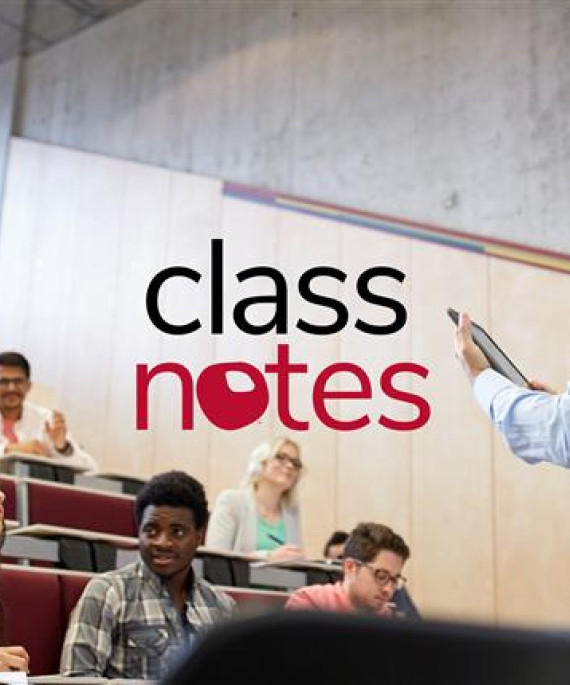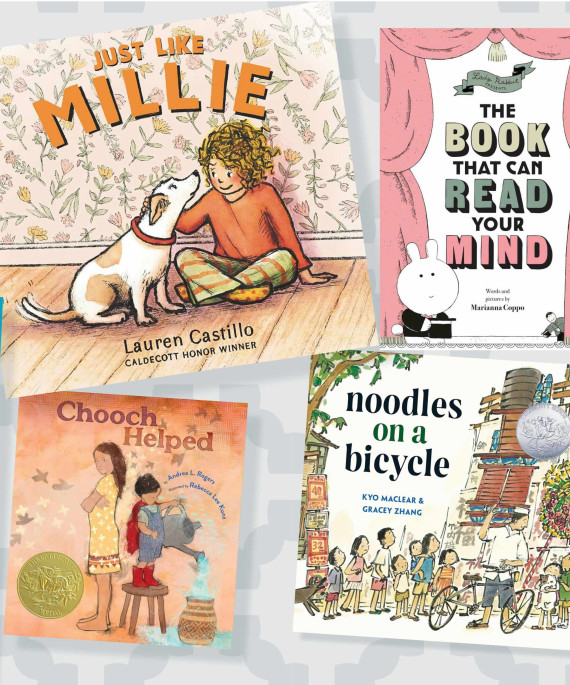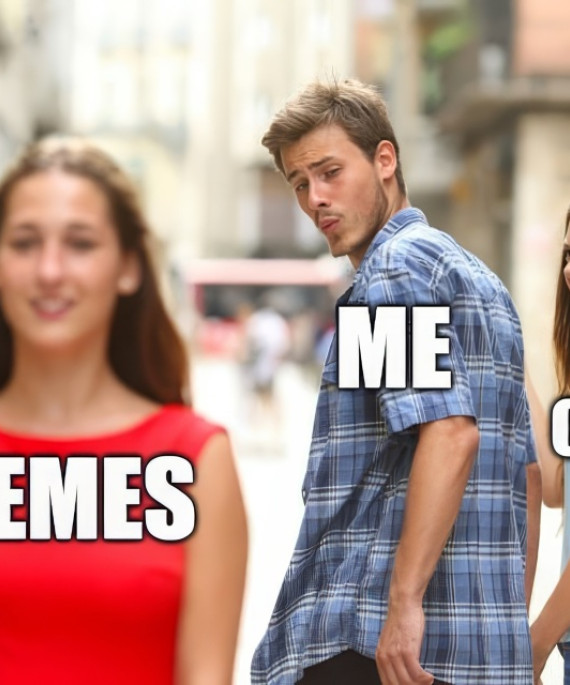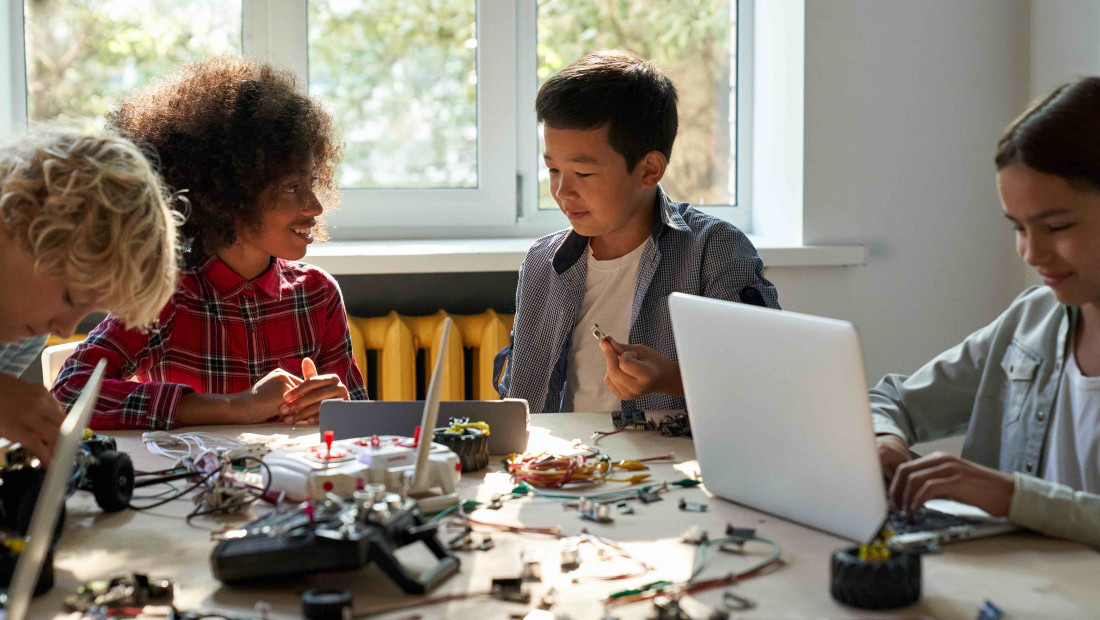
Computing has become integral to the practice of science, technology, engineering and mathematics (STEM). This trend has created a need for elementary and middle school science and math curricula that integrate and apply computational thinking.
To address this need, I collaborated on a six-year project called Science and Integrated Language Plus Computational Thinking and Modeling (SAIL+CTM) with English Learners. It began in 2017 and was just completed this year.
Funded by a National Science Foundation award via New York University and Vanderbilt University (I was a doctoral student at the latter), this research and development effort was aimed at creating science curricula that aligned to the Next Generation Science Standards (NGSS) and that integrated computational modeling.
In addition, the project has had a special focus on supporting multilingual students classified as English learners (ELs) in engaging with computational modeling.
Goals of the project
The overall goals of the six-year project were: (1) to investigate the feasibility of the curriculum in classrooms and (2) to investigate the extent to which the curriculum promotes student learning.
Prior years’ work on the project involved developing and testing a pilot curriculum. During 2021-2022, the last year of the research, my funded work at Ohio State focused on two areas:
- Identifying the diverse linguistic and cultural resources that students brought into the curriculum through their participation in the projects
- Analyzing the role of emotion in shaping the questions students asked and how they designed their investigations
The project took place in Elizabeth Public Schools in Elizabeth, New Jersey, and in Franklin Special School District in Nashville. These two distinct sites have diverse student populations.
New Jersey adopted the NGSS and is currently working out implementation plans, whereas Tennessee represents states that have not adopted the NGSS.
How students create the computational models
StarLogo Nova is used to create the computational models. This free programming environment allows students to create 3D simulations or games for understanding complex concepts in science and math.
Students write computer code using visual programming “blocks” that snap together. This environment allows all students, including English learners, to model causal relationships that explain the studied phenomena.
Using StarLogo Nova, the project embedded computational thinking throughout the NGSS-aligned curriculum for fifth- and sixth-grade students and their teachers.
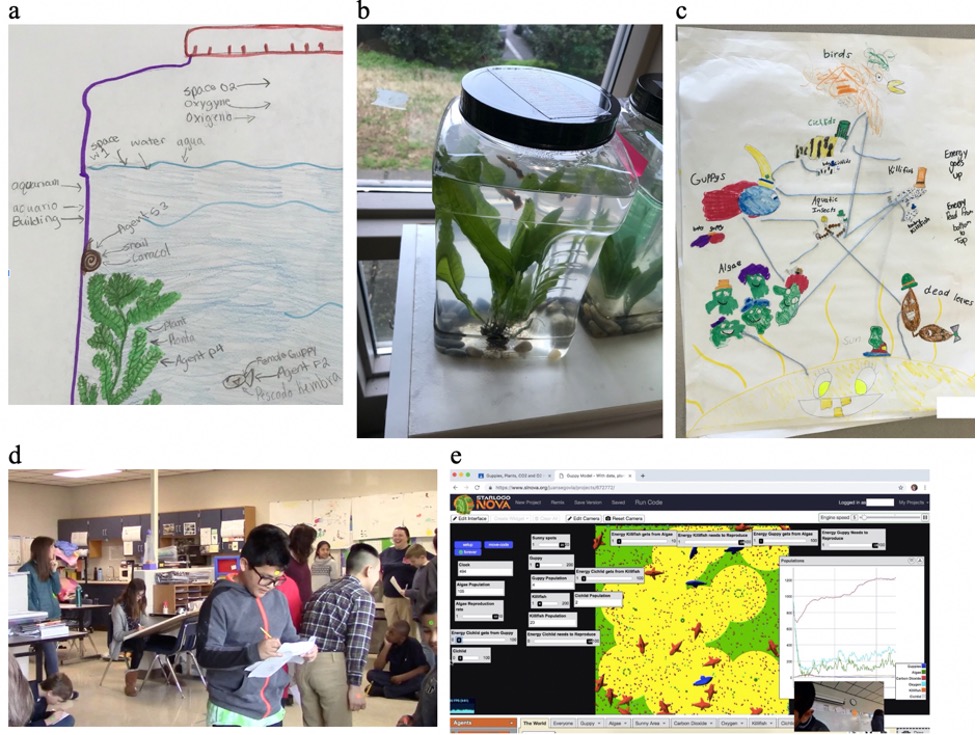
What students learn
The SAIL+ CTM curricular units being developed integrate computational thinking with other forms of modeling. For example, students created several models as part of a SAIL+CTM ecosystems unit.
The photos show examples of student models created as a part of a SAIL+CTM ecosystems unit.
Photo A is a multilingual, diagrammatic model drawn by the students of an aquatic ecosystem, which they later used as a plan to construct their ecosystem-in-a-jar model. It includes text in English, Spanish and computer code.
Photo B is a photograph of a physical ecosystem-in-a-jar model. The jar contains water, aquatic plants, snails and guppies.
Photo C is a student’s diagrammatic food web model. It illustrates how energy is transferred through a larger ecosystem that includes components of the ecosystem-in-a-jar (i.e., fish, snails, plants).
Sixth-grade students in photo D are engaged in creating their embodied models of the guppies’ ecosystem.
Photo E is a screen capture of the computational model created using StarLogo Nova, which shows population dynamics in a larger ecosystem of plants, guppies, killifish, and cichlids.
Student learning is being evaluated
To achieve the first goal in terms of feasibility of classroom implementation, the project has been examining the following research questions:
- To what extent and how do teachers support students' engagement in computational modeling?
- To what extent and how do students engage in computational modeling?
- What design features of the curriculum and software support students' engagement in computational modeling?
Data gathering strategies included focus groups, field notes to document teachers' feedback and classroom observations, including videotaping.
To achieve the second goal in terms of student learning outcomes, the project has examined the following questions:
- How does students’ understanding of the causal relationships underlying phenomena evolve as they engage in various types of modeling — for instance, physical, diagrammatic and computational modeling — over the year?
- How does students' understanding of key aspects of computational thinking — e.g., abstraction, pattern generalization, representational competence, modularization, algorithmic notions of flow of control and conditional logic — evolve as they engage in computational modeling over the full-year curriculum?
To measure student learning outcomes, the project used student assessments of science and computational thinking.
A principal outcome of this project is a field-tested and research-informed model that integrates (a) science learning, (b) language learning and (c) infusion of critical computational thinking constructs and ideas. We expect to make this model available to schools in the near future.
So far, our team’s publications in science education journals show we have found that:
- Embodied modeling activities not only support computational modeling, but also create equitable opportunities for learning and participation (see Pierson and Brady, 2020).
- Students “collaborate” with computational models, treating them as (a) conversational peers, (b) co-constructors of lines of inquiry and (c) projections of students’ agency and identity (see Pierson, Brady and Clark, 2020).
- Modeling can provide a context to invite students’ multilingual language practices to support new kinds of learning, not only about STEM content and practices, but also about what counts as valuable participation in these spaces (see Pierson, Clark and Brady, 2021)
- Connecting disciplinary practices, like computational modeling, with students language practices could address persistent challenges of developing and researching equitable pedagogies and learning experiences for multilingual students (see Pierson and Grapin, 2021)

